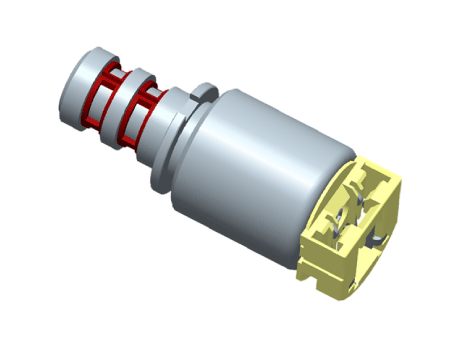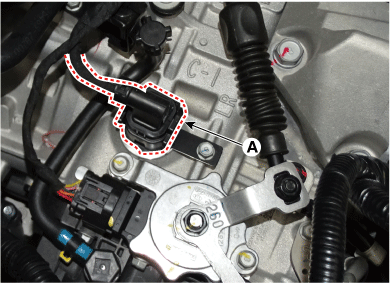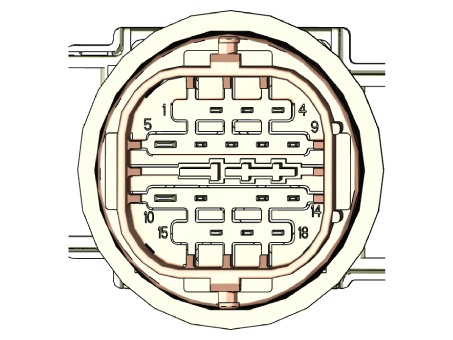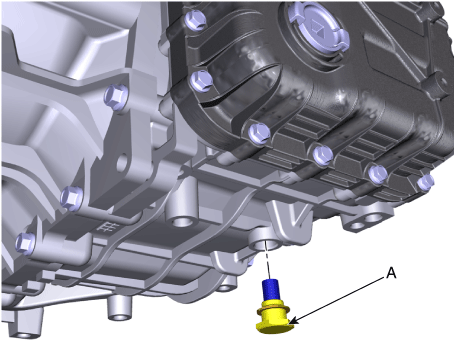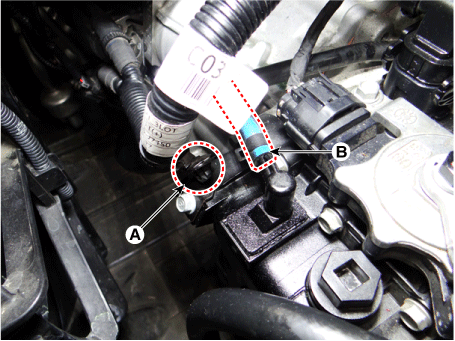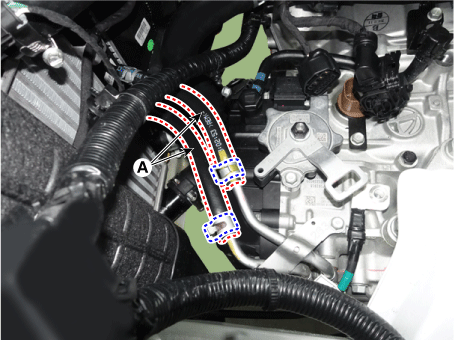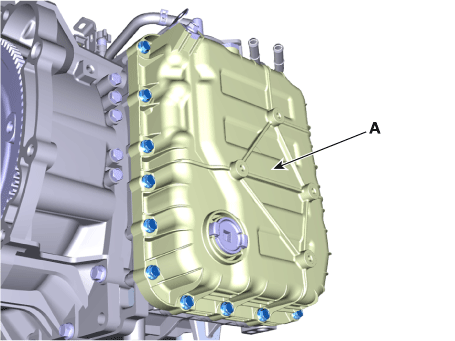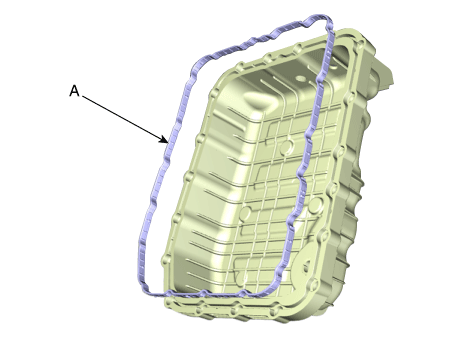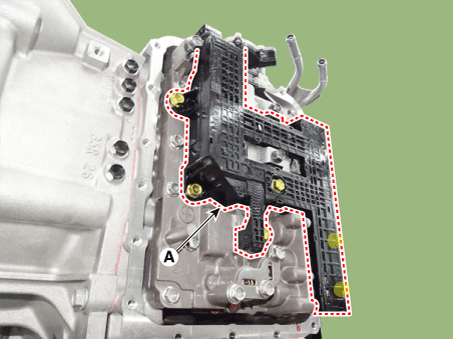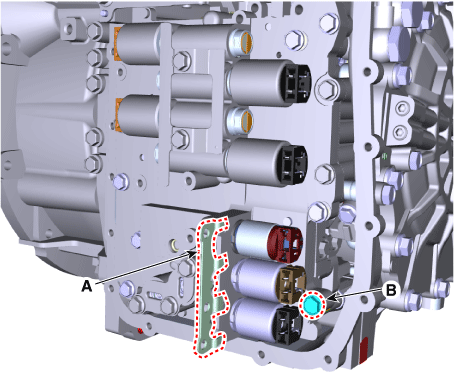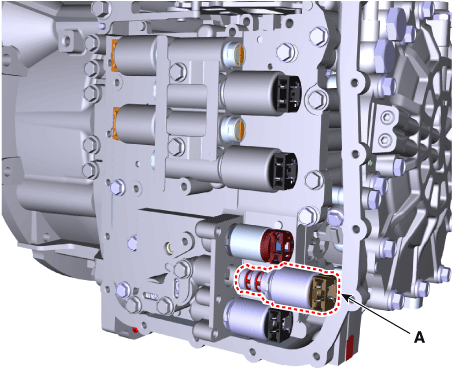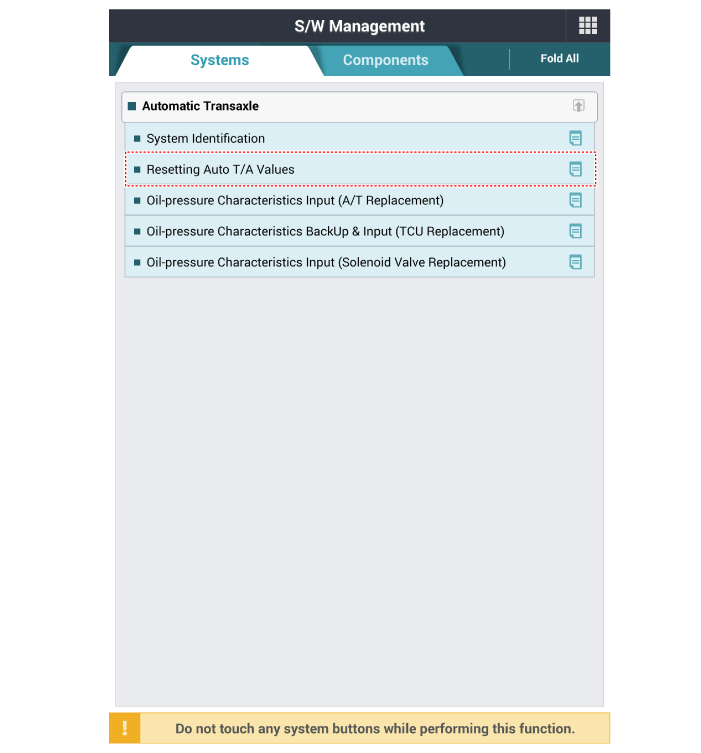Kia Optima: Hydraulic System / Torque Converter Control Solenoid Valve (T/CON_VFS)
Specifications
| Specification |
|
Control type |
N/L (Normal Low) |
|
Control pressure kpa (kgf/cm², psi) |
0 - 519.75 (0 - 5.3, 0 - 75.38) |
|
Current (mA) |
0 - 850 |
|
Coil resistance (Ω) |
5.1 ± 0.3 |
Description and operation
| Description |
| • |
Torque converter control solenoid valve is a Variable Force Solenoid (VFS) type. |
| • |
When TCM supplies variable current to solenoid valve, hydraulic pressure of torque converter clutch is controlled by solenoid valve.
|
Components and components location
| Component Location |
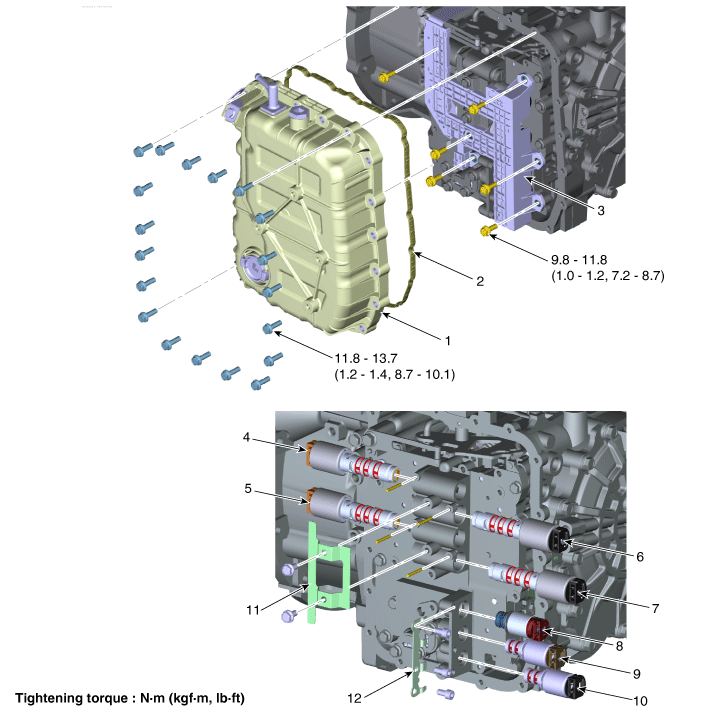
| 1. Valve Body Cover |
8. SS-A ON/OFF Solenoid Valve
|
| 2. Valve Body Gasket |
9. Torque Converter Control Solenoid
Valve |
| 3. Main Harness |
10. Line Pressure Control Solenoid
Valve |
| 4. 26 Brake Control Solenoid
Valve |
11. Support Bracket |
| 5. 35R Clutch Control Solenoid
Valve |
12. Support Bracket |
| 6. Underdrive Brake Control Solenoid
Valve |
|
| 7. Overdrive Clutch Control Solenoid
Valve |
Repair procedures
| Inspection |
| 1. |
The automatic transaxle system can be more quickly diagnosed for troubles by using the vehicle diagnostic system (KDS). (Refer to "DTC guide") KDS provides the following information
|
| Component inspection |
| 1. |
Switch "OFF" ignition. |
| 2. |
Remove the air cleaner assembly. (Refer to Engine Mechanical System - "Air cleaner") |
| 3. |
Remove the battery and battery tray. (Refer to Engine Electrical System - "Battery") |
| 4. |
Disconnect the solenoid valve connector (A).
|
| 5. |
Measure the resistance between power terminal (10) and signal terminal (2).
|
| Removal |
|
| 1. |
Remove the under cover. (Refer to Engine Mechanical System - "Engine Room Under Cover") |
| 2. |
Remove the ATF drain plug (A), allow the fluid to drain out and then reinstall the drain plug.
|
| 3. |
Remove the air duct and air cleaner assembly. (Refer to Engine Mechanical System - "Air cleaner") |
| 4. |
Remove the fixing clip (A) and the air breather hose (B).
|
| 5. |
Separate the ATF cooler hose (A).
|
| 6. |
Lift the vehicle after loosening valve body cover upper bolts. |
| 7. |
Remove the valve body cover (A) by loosening bolts.
|
| 8. |
Remove the main harness (A) after removing the bolts.
|
| 9. |
Remove solenoid valve support bracket (A) and then loosen the valve body mounting bolt (B).
|
| 10. |
Remove the torque converter control solenoid valve (A).
|
| Installation |
| 1. |
Install in the reverse order of removal.
|
| 2. |
Perform the procedures below after installing.
|
 Oil Pump
Oil Pump
Repair procedures
Removal
If ATF is leaking due to damage on O-ring, replace O-ring with a new
one.
(Refer to ...
 35R Clutch Control Solenoid Valve (35R/C_VFS)
35R Clutch Control Solenoid Valve (35R/C_VFS)
Specifications
Specification
Item
Specification
Control type
N/L (Normal Low)
Control pressure (kpa (kgf/cm², ps ...
Other information:
Kia Optima DL3 2019-2025 Owner's Manual: Limitation of the system
The Forward Collision-Avoidance Assist (FCA) system is designed to monitor the vehicle or pedestrians ahead in the roadway through camera recognition to warn the driver that a collision is imminent, and if necessary, apply emergency braking. In certain situations, the camera may not be able to ...
Kia Optima DL3 2019-2025 Owner's Manual: Cruise Control System
The cruise control system allows you to program the vehicle to maintain a constant speed without depressing the accelerator pedal. This system is designed to function above approximately 30 km/h (20 mph). If the cruise control is left on, (CRUISE indicator light in the instrument cluster ill ...

